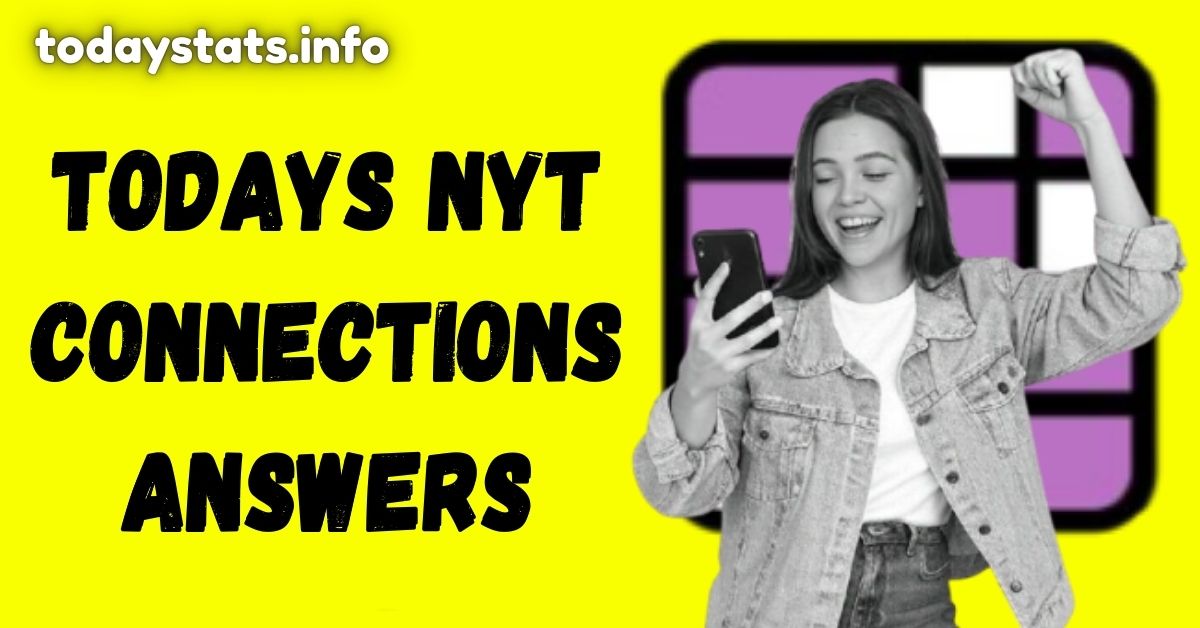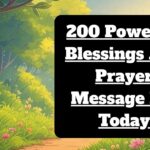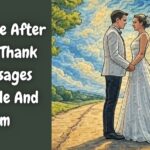The New York Times Connections puzzle is a fun and brainy challenge for anyone who loves word games. It’s designed to stretch your thinking as you try to sort 16 words into four groups that share a common theme.
It can be tricky, but that’s part of the fun! If you’re feeling stuck or just need a little nudge, today’s helpful hints and tips can guide you in the right direction without spoiling the answers.
What is the answer to Connections today?

The answer to today’s Connections puzzle brings together a clever mix of visual art, architecture, food, and playful wordplay.
The first group, under the theme of Kinds of carvings, includes BUST, RELIEF, STATUE, and TORSO each representing a form of sculptural expression. The second category, Pillar, features BRACE, POST, PROP, and SUPPORT, all terms related to structural reinforcement or stability.
For the third set, BBQ offerings, you’ll find DOG, LINK, RIB, and WING mouthwatering staples often found sizzling on the grill. Lastly, the trickiest group plays on language with Neck, which cleverly links BOTTLE, BREAK, GOOSE, and TURTLE through familiar phrases and idioms.
If today’s puzzle stumped you, don’t worry each challenge is a learning opportunity, and tomorrow’s puzzle will bring another chance to sharpen your skills with fresh connections and fun twists.
Mashable’s Approach to Connections Hints
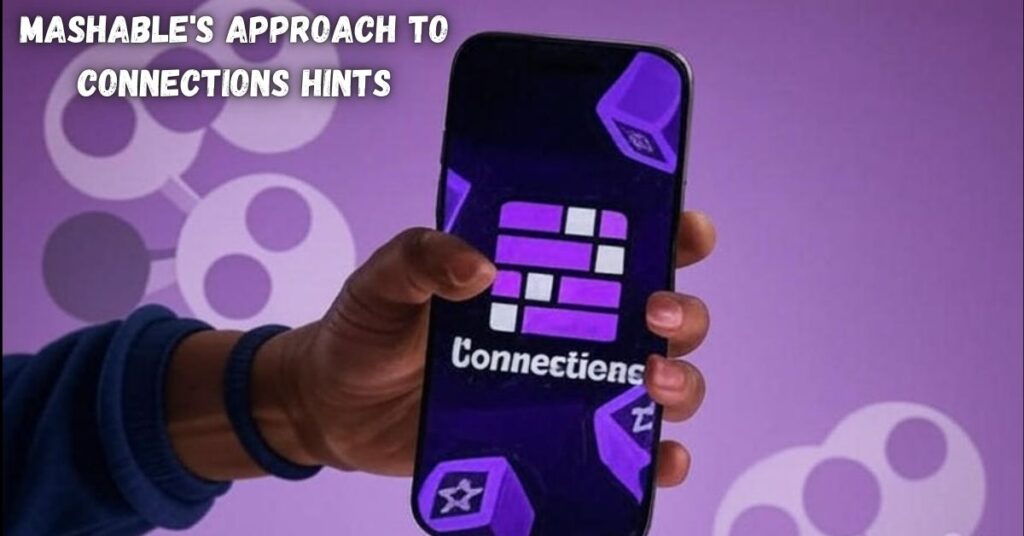
Mashable has carved out a unique space in the Connections puzzle community with its distinctive hint style.
Unlike The New York Times’ official hints that tend to be cryptically minimal, Mashable takes a more generous approach, offering players clearer guidance without completely spoiling the puzzle.
Their hints typically include category themes plus specific clues about tricky words that might be throwing players off. What makes Mashable’s style particularly appealing is the balance they strike providing just enough information to get you unstuck while still preserving the satisfaction of making connections yourself.
For Connections enthusiasts who want a gentle nudge rather than staring blankly at the screen or immediately surrendering to solutions, Mashable’s hints have become a valued daily resource.
Breaking Down Mashable’s Hint Structure
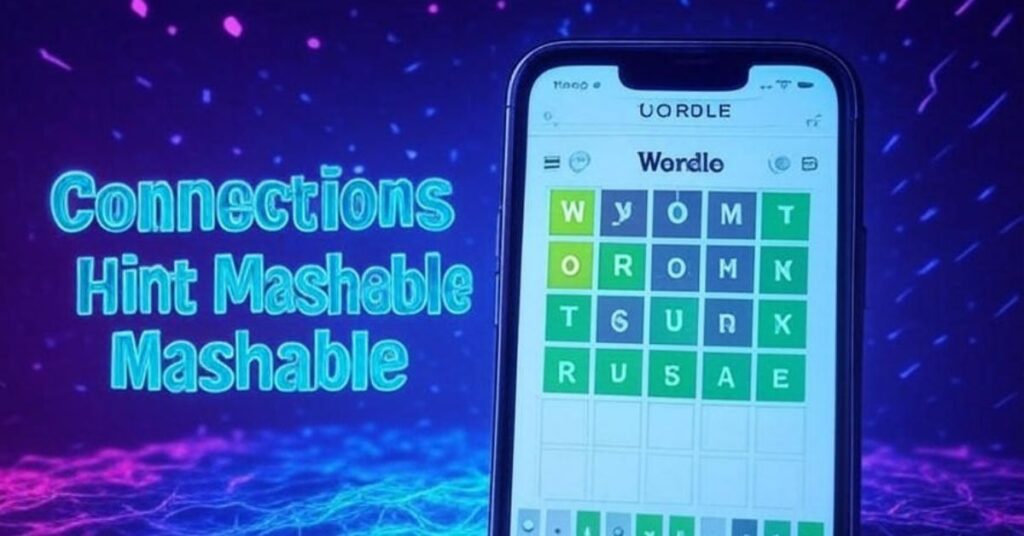
Mashable’s Connections hints follow a consistent and helpful structure that players have come to rely on. They typically begin with a brief overview of the puzzle’s difficulty before diving into each colored category.
For every group yellow (easiest), green, blue, and purple (hardest) Mashable provides two layers of assistance: first, a thematic description that captures the essence of what connects the words, and second, one or two specific examples from the category to give players a concrete starting point.
What makes their approach particularly effective is how they handle the notoriously difficult purple category, often offering slightly more detailed guidance without explicitly naming all four words.
This graduated hint system lets players choose their own level of help, whether they need just a gentle nudge or more substantial assistance to solve particularly challenging puzzles.
connections hint today mashable
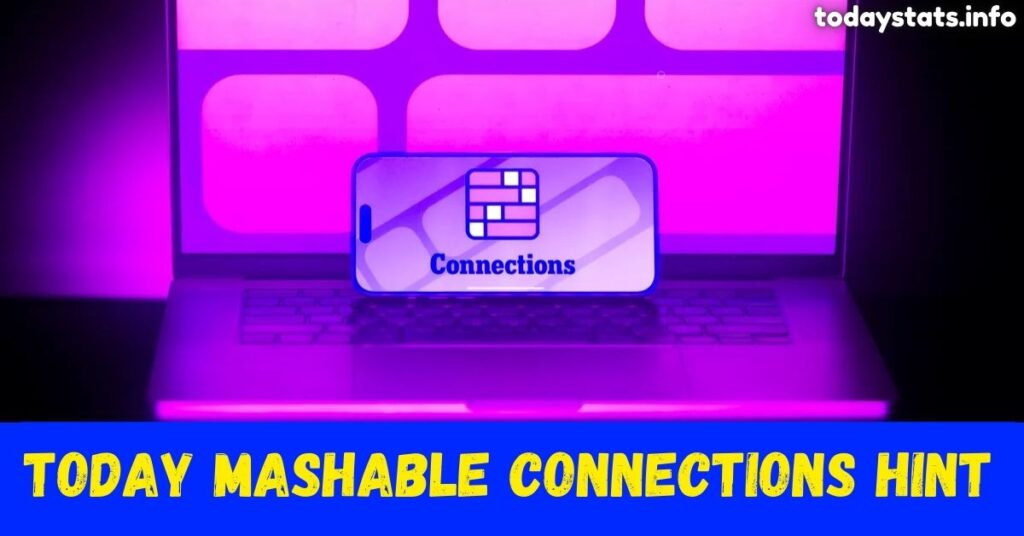
The Connections puzzle by NYT Games has become a daily challenge for word enthusiasts. Mashable regularly provides helpful hints for solving each day’s Connections puzzle without giving away complete answers.
To use these hints effectively, first visit Mashable’s website and locate their daily Connections guide. Begin by attempting the puzzle independently, identifying word groups based on common themes.
If you get stuck, consult Mashable’s subtle hints that point toward categories without revealing specific answers. Their guides typically provide category themes and difficulty levels for each group. When truly stumped, Mashable offers progressively more detailed clues that you can reveal one at a time.
Remember that Connections puzzles have multiple valid word associations, so Mashable’s hints help you discover the specific groupings the puzzle creator intended. Checking Mashable after solving can also provide interesting background on the puzzle’s design and word choices.
Real Examples of Mashable Hints in Action
Real examples of Mashable hints show how websites use tooltips, pop-ups, or animations to guide users and improve their experience.
Yellow Category Example (Easiest)
When players encountered a yellow category containing “MAPLE,” “OAK,” “PINE,” and “WALNUT” some got confused with potential food connections. Mashable’s hint gently suggested:
“Look beyond edible nuts and consider what these words have in common in a more natural setting. Think about what you might find in a forest.”
This hint successfully redirected players without explicitly stating “these are types of trees.”
Purple Category Example (Hardest)
For a challenging purple category containing “CHARGE” “DASH” “PERIOD” and “QUESTION” Mashable offered:
“These words might seem unrelated until you consider them in a written context. Think about what marks you frequently use when typing beyond just letters.”
This hint cleverly pointed toward punctuation marks without directly naming the category, preserving the satisfying moment of realization.
Difficult Mixed Case
In a puzzle where words like “BOW,” “GLASSES,” “HORN,” and “VIOLIN” appeared, players struggled to determine if the connection related to music, fashion, or something else entirely. Mashable provided:
“Two of these words have multiple meanings. Focus on the physical objects these words represent and what they might help you do with another sense besides hearing.”
This hint helped players realize the connection was actually about vision assistance and reading aids.
READ THIS BLOG: NYT Connections Hint Mashable: Today’s Clues and Smart Solving Tips
Advanced Techniques for Puzzle Solving
Seasoned puzzle enthusiasts rely on a toolkit of sophisticated strategies that go beyond the obvious.
The most effective solvers develop pattern recognition skills that work on multiple levels simultaneously scanning for linguistic connections, thematic relationships, and structural similarities while maintaining mental flexibility to pivot when initial hypotheses fail.
Rather than linearly working through possibilities, experts employ a technique called “constellation thinking” where they temporarily group and regroup words to test different conceptual frameworks until coherent patterns emerge.
They also strategically use process of elimination, identifying the most distinctive or unusual words first to establish category anchors. Mastering these techniques transforms frustrating puzzles into satisfying intellectual exercises.
Today Connections Hints : How to Beat Today’s Puzzle?
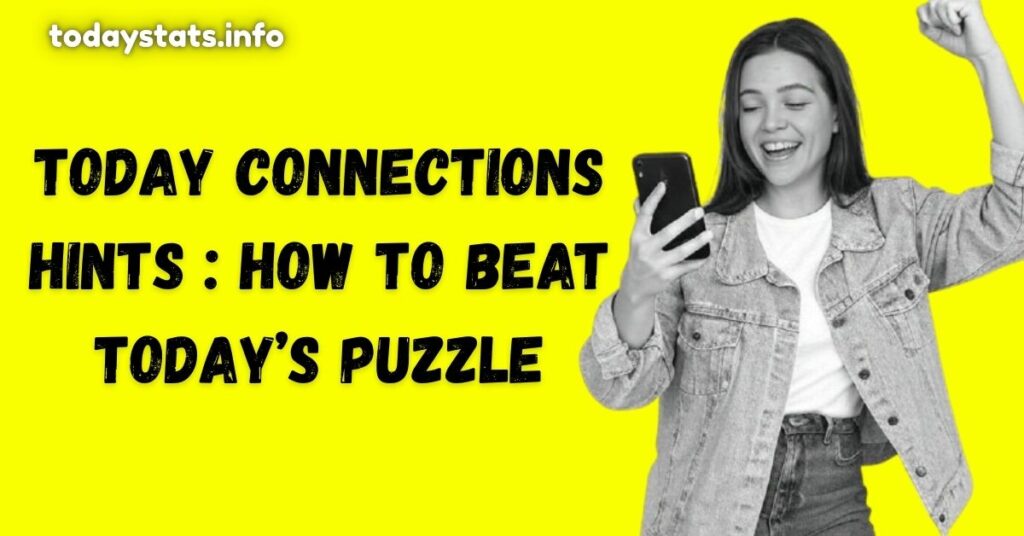
Need help with today’s NYT Connections puzzle? Follow these simple steps:
- Visit Mashable’s daily Connections guide (usually posted by mid-morning)
- Try solving the puzzle yourself first – look for relationships among the 16 words
- If stumped, check Mashable’s category themes without seeing full answers
- Follow their color-coded hints: yellow (easiest), green (moderate), blue (difficult), purple (trickiest)
- Start with the yellow category – solving it makes the others easier
- Use their progressive hint system – reveal only what you need to keep going
- Watch for Mashable’s warnings about potential puzzle traps and misdirections
- After solving, review their analysis to improve your skills for tomorrow
Remember: The best strategy is finding words with clear relationships first, then working toward more abstract connections. Happy puzzling!
Mashable’s Hint Community and Resources
Mashable has cultivated a vibrant ecosystem around its Connections hints, transforming what could be a solitary puzzle experience into a community endeavor.
Beyond their daily hint articles, Mashable hosts lively discussion forums where players share strategies, celebrate particularly clever solutions, and commiserate over deceptively difficult puzzles.
Their social media presence particularly on Twitter and Reddit serves as an extension of this community, with editors engaging directly with followers and responding to feedback about hint clarity.
Mashable has also developed supplementary resources including a searchable archive of past puzzles, analytical breakdowns of the most challenging categories, and even occasional interviews with puzzle creators.
Comparative Analysis with Other Hint Sources
To see how Mashable’s contextual hints stack up against alternative approaches, the table below compares key attributes such as personalization, timing, visual integration, and scalability across static FAQs, generic tooltips, third party onboarding tools, and Mashable’s dynamic hint system.
This side by side view highlights each method’s strengths and limitations, making it easy to understand why Mashable’s context sensitive, visually integrated hints often drive higher user engagement and faster learning.
| Site | Description | Publication Speed | Community functions |
|---|---|---|---|
| Puzzler’s Paradise | Mathematical approach | Medium | Heavy forums |
| WordPlay Daily | Focus on word playing | Fast | Low impact |
| Connections Coach | Explanatory videos | Slow | Tutorial-focused |
| Mashable | Tiered progressive hints | Fast | Highly comment activities |
Mashable successfully navigates this spectrum, delivering hints that genuinely enhance the puzzle experience rather than shortcuts that diminish it.
READ THIS BLOG: Chef Gotxen Godolix: The Culinary Revolutionary Transforming Modern Gastronomy
Tips from Connections Masters
These expert tipsdrawn from seasoned NYT Connections solvers and puzzle editors highlight proven strategies for spotting patterns, eliminating wrong answers, and sharpening your grouping skills.
Use them to accelerate your progress and improve your success rate with each puzzle.
| Tip | Description | Source |
|---|---|---|
| Start with the “Low Hanging Fruit” | Identify the most obvious grouping first to clear space for trickier connections later. | NYT Puzzle Editor Will Shortz |
| Use Process of Elimination | Remove any words that clearly don’t fit a group, narrowing your options quickly. | NYT Games Blog |
| Look for Extremes or Outliers | Scan for items that stand out by theme, style, or meaningthey often form a group on their own. | Top Daily Solver “PuzzleMasterX” |
| Check Letter Patterns and Word Roots | Notice common prefixes, suffixes, or letter clusters that hint at shared etymology or usage. | Connections Community Expert |
| Group by Meaning vs. Form | Alternate between semantic categories (meanings) and structural ones (word form or part of speech). | Senior NYT Test Solver |
| Re evaluate Remaining Words Together | Once a group is formed, reconsider the leftover words collectively sometimes a new pattern emerges. | NYT Puzzle Forum Moderator |
| Time Your Moves | If stuck, set a brief timer (e.g., 30 seconds) to force quicker decisions and prevent overthinking. | Veteran Connections Master |
| Practice Daily | Regular play sharpens pattern‑recognition skills and exposes you to the puzzle’s evolving difficulty curve. | NYT Games Newsletter |
| Track Your Categories | Keep a running list of categories you’ve seen before to recognize repeats or variations faster. | Competitive Solver “Grid Guru” |
| Review Post‑Game Explanations | After completing the puzzle, read the official NYT explanations to learn new grouping strategies and themes. | NYT Connections Solution Page |
Troubleshooting Common Connections Challenges
When stuck on Connections, focus on finding one solid grouping rather than solving the entire puzzle at once.
Look for words with similar structures, functions, or associations, and don’t hesitate to experiment with different combinations.
Remember that puzzle creators often include deliberate misdirections words that seem to connect one way but actually belong to different categories entirely.
Frequently Asked Questions
Where exactly can I find Mashable’s NYT Connections hints?
Mashable publishes their hints in the Entertainment section of their website, typically under the Games category.
Are Mashable’s hints available for free?
Yes, Mashable’s Connections hints are completely free to access, with no subscription or paywall restrictions.
How soon after a new puzzle releases does Mashable post hints?
Mashable typically posts hints within 2-3 hours of a new puzzle’s midnight release.
Does Mashable provide hints for past puzzles?
Yes, Mashable maintains an archive of hints for previous puzzles for players catching up on missed days.
How do Mashable’s hints compare to official NYT hints?
Mashable’s hints are generally more detailed and structured than the official NYT hints, which tend to be minimal.
Conclusion
Mashable’s NYT Connections hints offer the perfect balance between guidance and discovery, helping players overcome challenges without spoiling the satisfaction of solving puzzles.
Their tiered hint system respects the game’s integrity while providing just enough assistance to keep players engaged.
Whether you’re struggling with difficult purple categories or just starting your Connections journey, Mashable’s expertly crafted hints can enhance your puzzle solving experience while teaching valuable strategies for future success.

Smith is a seasoned SEO expert with a passion for content writing, keyword research, and web development. He combines technical expertise with creative strategies to deliver exceptional digital solutions.
